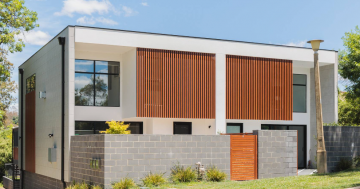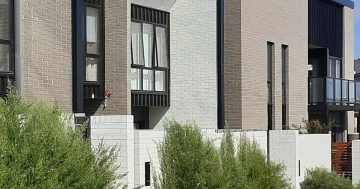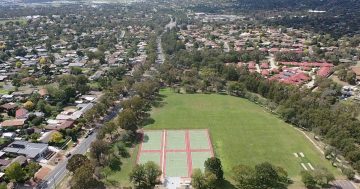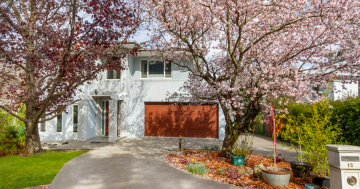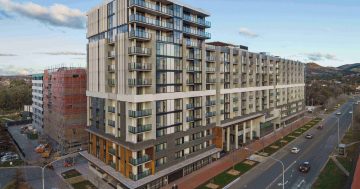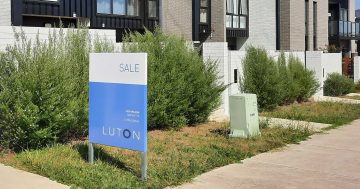
New apartments: Canberrans can’t get enough of them. Photo: Michelle Kroll.
Canberra is in desperate need of new housing stock and the ACT Government should take advantage of the current market to release more land, according to one property figure speaking after new monthly data showed prices picking up steam again.
The CoreLogic figures show the unit and townhouse sector leading the way, but the stand-alone houses have also regained some momentum after February’s slowdown.
Overall prices rose 1 per cent, with houses up 0.8 per cent and the Canberra market cementing its position as the second most expensive in the country behind Sydney, with units and townhouses surging 1.5 per cent.
While nowhere near the highs of last year, demand remains strong, especially as buyers look for better value in medium and high-density dwellings.
In the first quarter of the year, there has been a solid 3.1 per cent gain overall, with houses up 2.9 per cent and units and townhouses up 3.8 per cent.
The median price for a house is now $1,055,812, a massive 22.4 per cent lift over the past 12 months. For units and townhouses the median price is $609,314, up 18.4 per cent for the past year.
Gungahlin and Weston Creek dominate CoreLogic’s top 10 suburbs for price growth over the past 12 months, with Waramanga on top with a 32.3 per cent gain for a median price of $1,004,939.
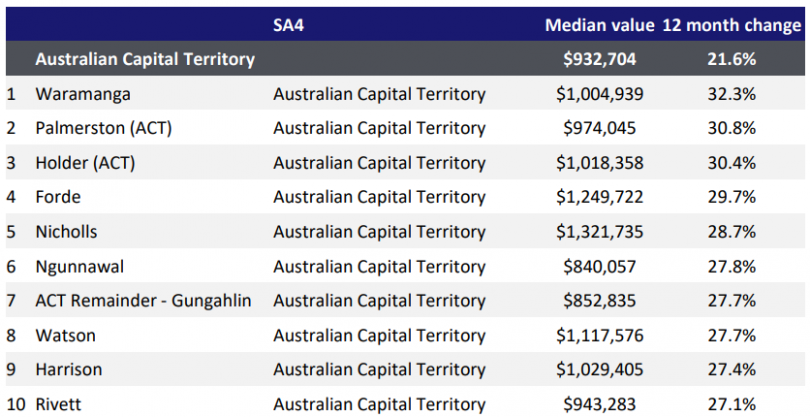
Top 10 suburbs: fastest median house price rises in the ACT in the past year. Image: CoreLogic.
Auction clearance rates have fallen this year but for the week ending 27 March it was 72.9 per cent with 155 properties, according to CoreLogic.
Inner South properties unsurprisingly led the top 10 results from last weekend with nearly $3 million and $2 million-plus results, but there was also a Coombs home that sold for nearly $2 million and an older house on a much bigger block in Rivett that went for $1.4 million.
Independent principal at Woden and Weston Creek Mark Wolens said the Canberra market was stabilising and the apartment sector was the big mover in the market.
Mr Wolens said affordability and flexibility were factors but he believed buyers had realised just how cheap apartments were.
“I think apartments for a number of years were just too cheap in this town,” he said. “It was cheaper before the current jump, with a basic deposit, $100 to $150 [a week] cheaper to purchase than it was to pay rent.
“That seems to have caught up now but people have looked at the market moving and jumped in and made the decision they want to get into the market at the affordable end.”
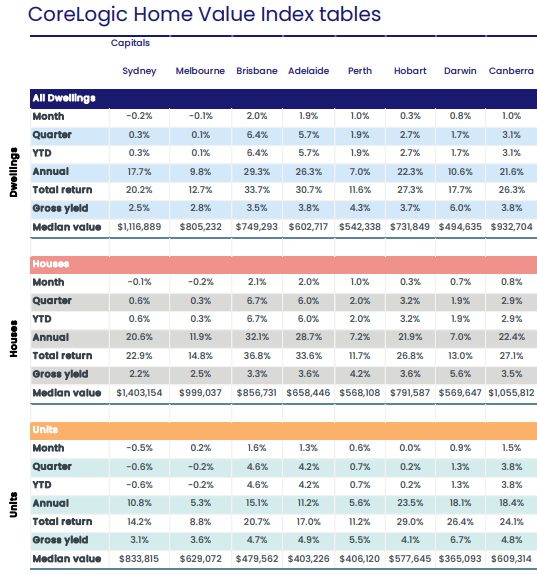
CoreLogic Hone Value Index tables. Image: CoreLogic.
Mr Wolens said much of the apartment stock had been sold, and some projects have had to be pushed back due to escalating construction costs.
He said that in Woden alone W2 had five units left, The Oaks Stages 1 and 2 were sold out, Woden Green Stage was sold out and Stage 2 is about to be released.
“That’s a lot of property, and the majority are live-in owners. There’s not much for people to choose from,” he said
Mr Wolens said his firm was desperate for more stock to meet the demand.
“We’re selling everything we’ve got, we can’t get enough stock. We can’t get enough established properties and more projects need to come to the market,” he said.
Mr Wolens said it would be smart economics for the government to sell more of its land in the current climate because “developers would pay hand over fist” for it now.
“Take advantage of the market now because you don’t know where the market’s going to be in three to four years, and everyone benefits,” he said
Although auction clearance rates had fallen, properties were still selling although they were taking a bit longer with more to choose from.
Mr Wolens said all suburbs were strong, particularly Weston Creek where, compared to nearby Molonglo, blocks were much bigger.
There was uncertainty about interest rates, the election and the economy, but the outlook remained positive in Canberra, he said.
CoreLogic’s national Home Value Index (HVI) was up 0.7 per cent, a small uptick in the monthly rate of growth driven mainly by stronger conditions in Brisbane, Adelaide, Perth and the ACT, along with several regional areas, offsetting a slip in values across Sydney and Melbourne.
Research Director Tim Lawless said the annual growth trend would fall sharply in the coming months as the strong gains recorded in early 2021 drop out of the 12-month calculation.
Negative factors include affordability, inflation and rising interest rates, but home-buyer assistance, more supply generally and an increase in migrant intake may mitigate these, CoreLogic said.












